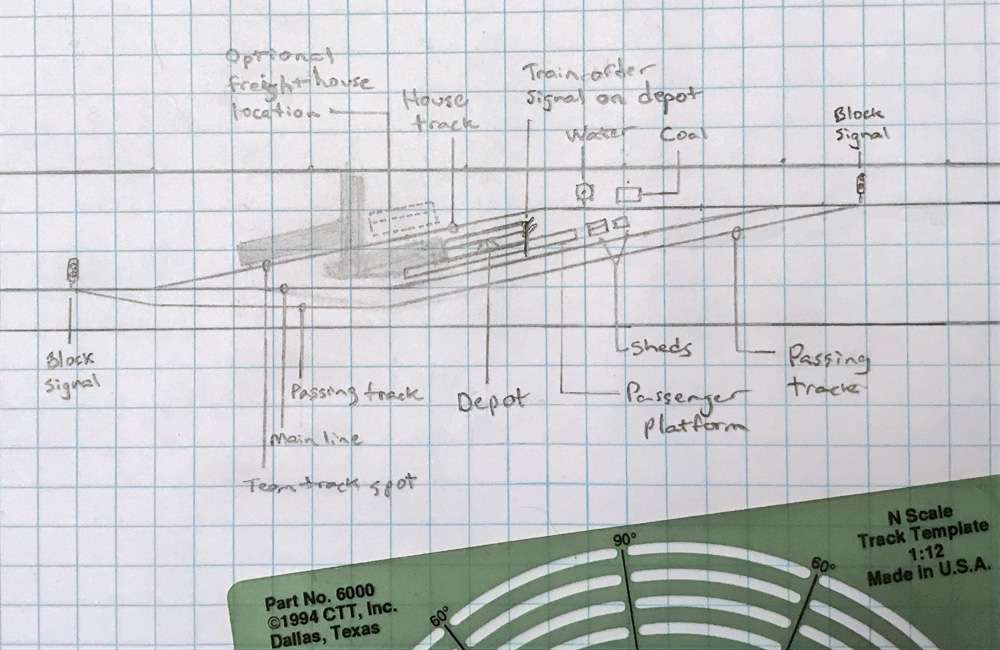
If you ask a layman to define a train station, they’ll describe a big building where people buy tickets and wait to board passenger trains. A slightly more knowledgeable person might also mention the presence of freight and baggage facilities and railroad offices.
But when we talk about railroad operations – whether of the full-size railroads or our models – another definition applies. As Jerry Dziedzic wrote in the “On Operation” column of October 2019, the rules the railroads follow define a station as a specific location named in a railroad timetable. No building, passenger shelter, or other facilities are necessary, not even a siding.
So, knowing that a station can technically be anything from a simple sign along the main line to a full-service freight and passenger terminal, what kind of things might we want to include at a station when designing a track plan? Let’s look at some things we might include at a station and what they do for our operational possibilities.
• A sign. This is the bare minimum requirement for a station. This sign must bear the station’s name and be clearly visible from the main line so the engineer can tell where it is when he passes or stops there. If there’s a depot, passenger shelter, or other trackside structure, the sign will be on the building.
• A passing siding. Trains stop at stations. A double-ended siding long enough to hold an entire train will let you make station stops without holding up other mainline traffic. A passing siding also facilitates runaround moves if there’s switching to do at the town
• Signals. If a train is going to stop at a station, its crew needs to know if and when it’s safe to start up again. A block signal indicates whether the track ahead is occupied or not. Block signals are usually positioned at some distance from the station, to allow a train to pull in without overrunning the signal. Another common type of signal is the train-order signal, which tells a train to stop at the station to receive orders. Finally, an interlocking signal indicates whether it’s safe to enter an interlocking plant, such as an at-grade crossing, though those aren’t always found at stations.
• Passenger and freight facilities. In the days before the interstate highways took over most people-moving duties, rare was the train station that didn’t have some provision to handle passengers (and their baggage). This could range from a simple whistle-stop platform, with or without a shelter, to the grandest union terminal. Smaller towns often had combined depots that incorporated less-than-carload-lot (LCL) freight facilities in the same building; busier big-city stations usually had a separate freight house to handle this traffic.
• The house track. This is the track that receives cars bearing less-than-carload-lot (LCL) freight destined for the station. It could lead to a freight house, a combined depot (one with both passenger and LCL freight facilities), or a simple unloading platform. It could be a stub or a double-ended track.
• A team track. This is where cars destined for in-town consignees who don’t have their own industry spur are spotted for loading and unloading. It’s usually along a paved lot where trucks (or, in old days, wagons drawn by horse teams – hence the name) can pull up alongside. The team track can be a dedicated spur or simply a convenient spot along the house track or an industrial spur. It may or may not have a platform.
• Crossovers. If the main line is double-tracked (or more), a crossover between the mains lets trains from both directions use the passing siding and switch industries on both sides of the track. A double-ended siding between the two mains can serve both purposes.
• Locomotive servicing facilities. Depending on the era, these could include water tanks, coaling facilities, diesel fuel stands, sanding towers, enginehouses, turntables, ash pits, washstands, and more. They aren’t needed at every station, though; for a small layout, one set of facilities is enough. You can even leave them out entirely, claiming they’re at an unmodeled, off-layout location.
• Sheds, sheds, sheds. Tool sheds, speeder sheds, maintenance sheds, supply sheds, signal cabinets, even outhouses if the era calls for them. These small structures really make a station scene look interesting and busy.
Take a look at my sketch above for a sample of an N scale station scene incorporating many of these elements.






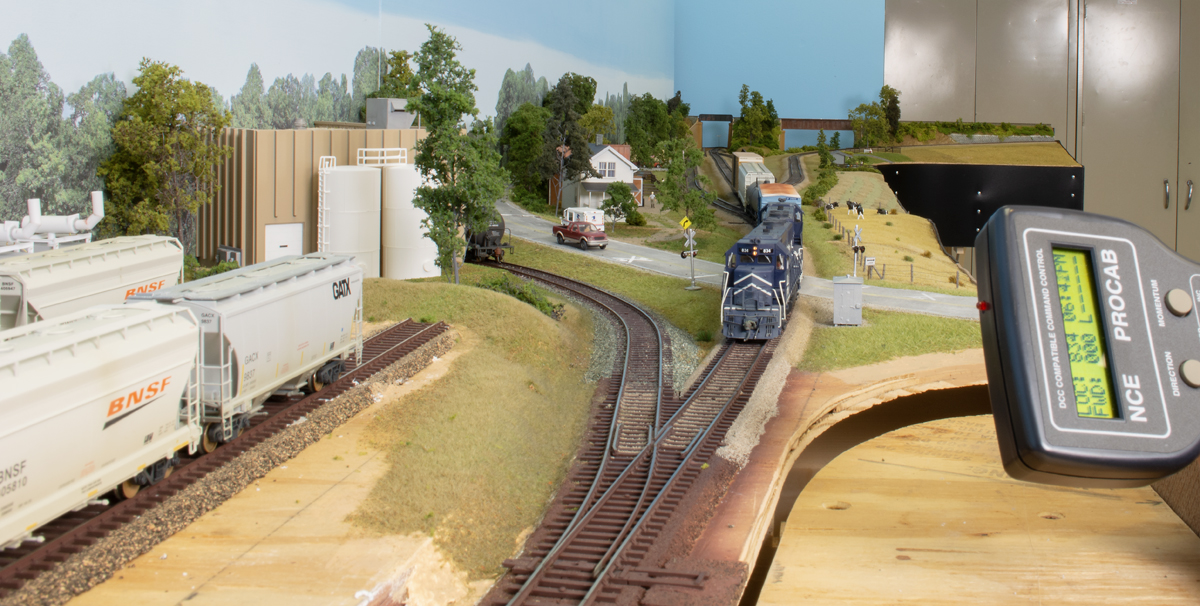
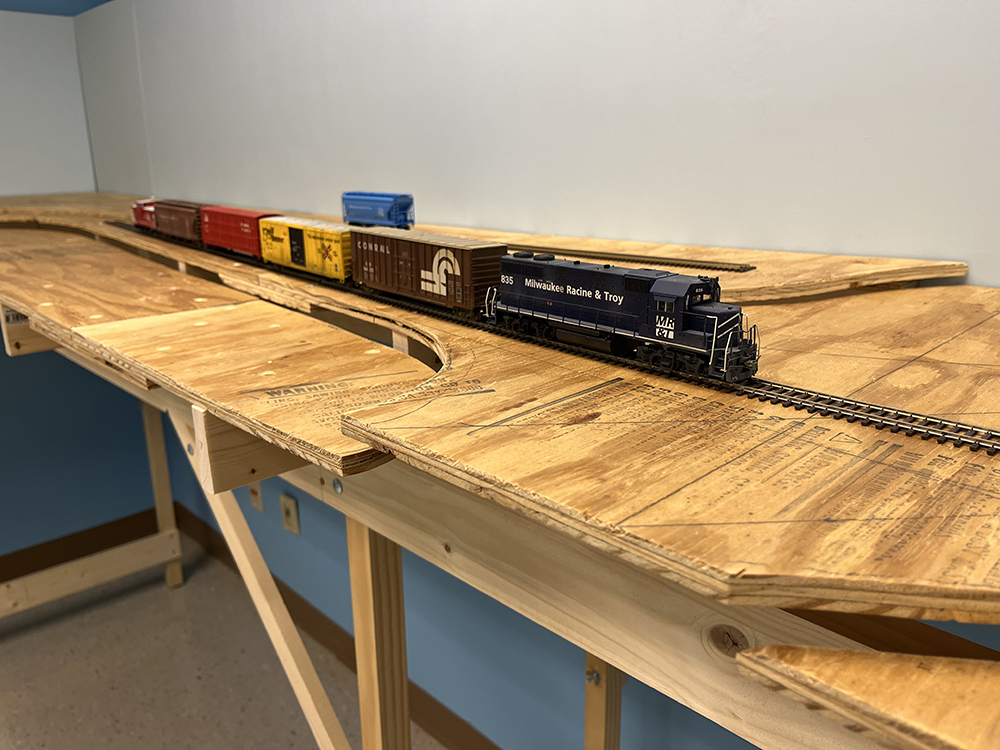
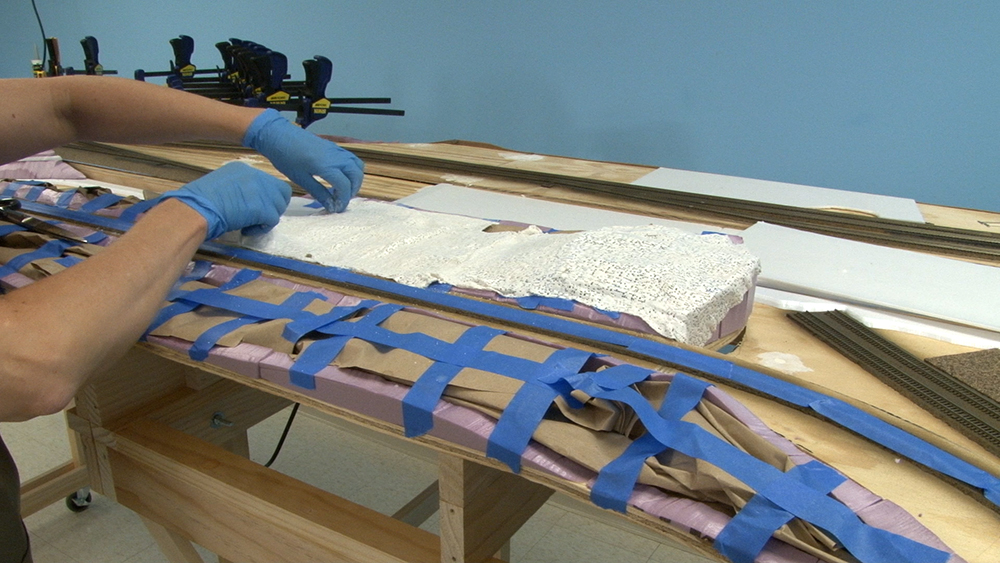
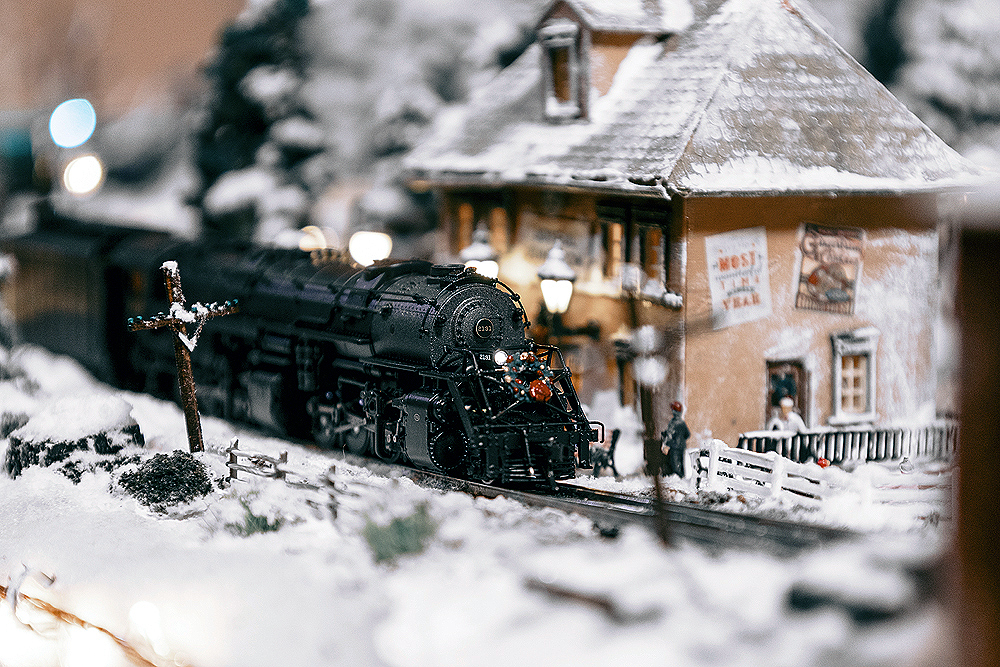




Steve: These are intended to be “sketches” not precision blueprints — and part of the fun for some modelers. -Steve S.
You should have used Track Planning Tools by K.I.S.S. Method Inc. instead of that green thing you show in the picture. (www.kissmethodinc.com) It’s a much better product with complete circles for curves. Steve Moore